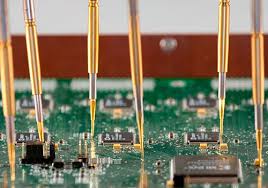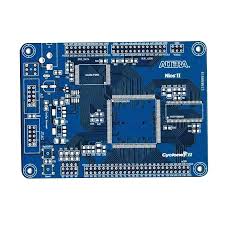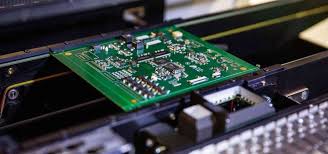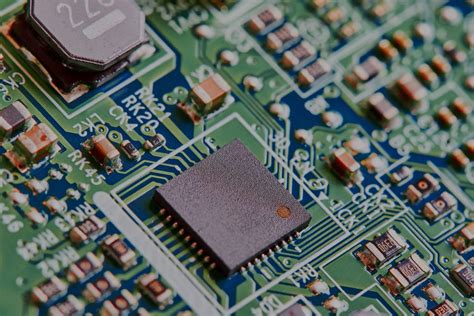Fct in pcb assembly
Fundamentals Of FCT In PCB Assembly
Functional Circuit Testing (FCT) in Printed Circuit Board (PCB) assembly is a critical process that ensures the reliability and functionality of electronic devices. This testing method is employed to verify that the assembled PCBs operate as intended under real-world conditions. By simulating the actual working environment, FCT helps identify any defects or issues that could compromise the performance of the final product. Consequently, understanding the fundamentals of FCT in PCB assembly is essential for manufacturers aiming to deliver high-quality electronic devices.
To begin with, FCT involves the use of specialized test equipment to evaluate the electrical performance of a PCB.
This equipment typically includes test fixtures, software, and hardware interfaces that interact with the PCB to simulate its operational environment. The primary objective is to check for correct functionality, which encompasses verifying signal integrity, power distribution, and the proper operation of integrated circuits and other components. By doing so, FCT ensures that the PCB meets the design specifications and performs its intended functions without any errors.
One of the key aspects of FCT is the development of a comprehensive test plan.
This plan outlines the specific tests to be conducted, the parameters to be measured, and the criteria for passing or failing each test. It is crucial to design the test plan meticulously, as it directly impacts the effectiveness of the FCT process. The test plan should cover all critical functions of the PCB, including input/output operations, communication protocols, and power management. Additionally, it should account for potential variations in environmental conditions, such as temperature and humidity, which could affect the PCB’s performance.
Transitioning to the execution phase, the FCT process begins with the preparation of the test setup.
This involves configuring the test equipment and connecting the PCB to the test fixtures. The test software is then executed to perform a series of automated tests, which generate data on the PCB’s performance. The results are analyzed to identify any discrepancies or failures. If any issues are detected, they are documented, and corrective actions are taken to address the root cause. This iterative process continues until the PCB passes all the tests, ensuring that it is fully functional and reliable.
Moreover, FCT is not a one-size-fits-all solution; it must be tailored to the specific requirements of each PCB design.
Different types of PCBs, such as those used in consumer electronics, automotive systems, or medical devices, have unique functional requirements and constraints. Therefore, the FCT process must be customized to address these specific needs. For instance, a PCB used in a medical device may require more stringent testing to ensure compliance with regulatory standards, whereas a consumer electronics PCB may focus more on performance and durability.
In addition to ensuring functionality, FCT also plays a vital role in quality control and product validation.
By identifying defects early in the production process, FCT helps reduce the risk of field failures and enhances customer satisfaction. It also provides valuable feedback to the design and manufacturing teams, enabling continuous improvement in PCB design and assembly processes. Furthermore, FCT data can be used to refine the test plan and improve the accuracy and efficiency of future tests.
In conclusion, Functional Circuit Testing is an indispensable component of PCB assembly that ensures the reliability and performance of electronic devices. By simulating real-world conditions and verifying the functionality of assembled PCBs, FCT helps manufacturers deliver high-quality products that meet design specifications and customer expectations. Through meticulous test planning, execution, and analysis, FCT contributes to the overall success of the PCB assembly process, making it a fundamental practice in the electronics manufacturing industry.

Common Challenges In FCT For PCB Manufacturing
Functional Circuit Testing (FCT) in Printed Circuit Board (PCB) assembly is a critical phase in the manufacturing process, ensuring that the assembled boards operate as intended. However, this stage is fraught with numerous challenges that can impact the overall quality and reliability of the final product.
One of the primary challenges in FCT for PCB manufacturing is the complexity of modern PCBs.
As technology advances, PCBs are becoming increasingly intricate, with higher component densities and more sophisticated functionalities. This complexity necessitates more comprehensive testing protocols, which can be difficult to implement and manage. Ensuring that every component and connection is tested thoroughly requires meticulous planning and execution, often leading to increased time and resource expenditure.
Another significant challenge is the variability in PCB designs.
Each PCB may have unique requirements and specifications, making it difficult to standardize the FCT process. This variability can lead to inconsistencies in testing outcomes, as different boards may require different testing approaches. Consequently, manufacturers must invest in adaptable testing equipment and develop flexible testing strategies to accommodate a wide range of PCB designs. Additionally, the rapid pace of technological advancements means that testing equipment and methodologies must be continually updated to keep pace with new developments, further complicating the FCT process.
Moreover, the miniaturization of electronic components poses a substantial challenge in FCT for PCB manufacturing.
As components become smaller, the precision required for testing increases. Ensuring accurate placement and connection of these tiny components is crucial, as even minor deviations can lead to significant functional issues. This necessitates the use of advanced testing equipment capable of handling minute components with high precision. However, such equipment can be costly, and the need for regular calibration and maintenance adds to the overall expense.
In addition to these technical challenges, there are also logistical and operational hurdles to overcome.
Coordinating the various stages of PCB assembly and testing requires efficient communication and collaboration among different teams. Any misalignment or miscommunication can lead to delays and errors, impacting the overall production timeline. Furthermore, the need for thorough documentation and traceability throughout the FCT process adds another layer of complexity. Manufacturers must ensure that all testing procedures and results are meticulously recorded and easily accessible for review and analysis.
Quality control is another critical aspect of FCT in PCB manufacturing.
Ensuring that each PCB meets the required standards and specifications is paramount, as any defects or failures can have serious repercussions. Implementing robust quality control measures throughout the FCT process is essential to identify and address any issues promptly. However, achieving this level of quality control can be challenging, particularly when dealing with high volumes of PCBs. Manufacturers must strike a balance between thorough testing and maintaining efficient production rates.
Finally, the cost implications of FCT in PCB manufacturing cannot be overlooked.
The need for advanced testing equipment, skilled personnel, and comprehensive testing protocols can significantly increase production costs. Manufacturers must carefully manage these costs to remain competitive while ensuring that the quality and reliability of their products are not compromised. This often involves making strategic decisions about which testing methodologies to employ and how to allocate resources effectively.
In conclusion, Functional Circuit Testing in PCB assembly is a complex and multifaceted process that presents numerous challenges. From the intricacies of modern PCB designs and the miniaturization of components to logistical and operational hurdles, manufacturers must navigate a myriad of obstacles to ensure the quality and reliability of their products. By investing in advanced testing equipment, developing flexible testing strategies, and implementing robust quality control measures, manufacturers can overcome these challenges and achieve successful FCT outcomes.

Best Practices For Implementing FCT In PCB Assembly
Functional Circuit Testing (FCT) in Printed Circuit Board (PCB) assembly is a critical step in ensuring the reliability and performance of electronic devices. Implementing FCT effectively requires adherence to best practices that encompass design considerations, test strategy development, and execution. By following these best practices, manufacturers can enhance the quality of their products, reduce time-to-market, and minimize costs associated with post-production failures.
To begin with, it is essential to integrate testability into the PCB design phase.
This involves incorporating test points and designing for accessibility to critical components. By doing so, engineers can facilitate easier probing and connection during the testing process. Additionally, using design-for-test (DFT) guidelines can help in identifying potential issues early in the design stage, thereby reducing the likelihood of costly rework later on. Ensuring that the PCB layout is optimized for testing can significantly improve the efficiency and accuracy of FCT.
Moreover, developing a comprehensive test strategy is paramount.
This strategy should outline the specific tests to be conducted, the sequence in which they will be performed, and the criteria for passing or failing each test. It is advisable to include a mix of static and dynamic tests to thoroughly evaluate the functionality of the PCB. Static tests can check for issues such as shorts, opens, and component placement, while dynamic tests can assess the performance of the circuit under operational conditions. By having a well-defined test strategy, manufacturers can systematically identify and address potential defects.
In addition to a robust test strategy, selecting the appropriate test equipment is crucial.
The choice of test equipment should be based on the complexity of the PCB and the specific requirements of the tests to be conducted. Automated test equipment (ATE) can offer high precision and repeatability, making it suitable for high-volume production. On the other hand, manual test setups may be more appropriate for low-volume or prototype testing. Regardless of the type of equipment used, regular calibration and maintenance are necessary to ensure accurate and reliable test results.
Furthermore, it is important to establish clear communication and collaboration between design and test engineers.
This collaboration can help in identifying potential test challenges early in the design process and in developing solutions to address them. Regular design reviews and test plan evaluations can facilitate this collaboration and ensure that both teams are aligned in their objectives. By fostering a collaborative environment, manufacturers can enhance the overall effectiveness of FCT.
Another best practice is to implement continuous improvement processes.
This involves regularly analyzing test data to identify trends and recurring issues. By doing so, manufacturers can pinpoint areas for improvement and implement corrective actions to enhance the quality of their products. Additionally, incorporating feedback from the testing phase into future design iterations can help in mitigating similar issues in subsequent production runs. Continuous improvement not only enhances product quality but also contributes to overall operational efficiency.
Lastly, ensuring proper documentation and traceability is vital.
Detailed documentation of the test procedures, results, and any deviations from the expected outcomes can provide valuable insights for future reference. Traceability allows manufacturers to track the history of each PCB, from design through to final testing, enabling them to quickly identify and address any issues that may arise. Proper documentation and traceability are essential for maintaining quality control and for meeting regulatory and industry standards.
In conclusion, implementing Functional Circuit Testing in PCB assembly requires a holistic approach that encompasses design considerations, strategic planning, equipment selection, collaboration, continuous improvement, and thorough documentation. By adhering to these best practices, manufacturers can ensure the reliability and performance of their electronic devices, ultimately leading to greater customer satisfaction and business success.
Innovations In FCT Technology For PCB Assembly
Functional Circuit Testing (FCT) has long been a cornerstone in the realm of Printed Circuit Board (PCB) assembly, ensuring that each board operates as intended before it reaches the end user. Recent innovations in FCT technology have significantly enhanced the efficiency, accuracy, and reliability of PCB testing processes. These advancements are not only pivotal for maintaining high-quality standards but also for meeting the ever-increasing demands of modern electronic devices.
One of the most notable innovations in FCT technology is the integration of automated test equipment (ATE).
Automated systems have revolutionized the testing landscape by reducing human error and increasing throughput. These systems are capable of performing a wide array of tests, from simple continuity checks to complex functional verifications, with remarkable precision. The automation of these processes allows for faster turnaround times, which is crucial in industries where time-to-market is a critical factor.
In addition to automation, the advent of advanced software algorithms has played a significant role in enhancing FCT capabilities
Modern software solutions can analyze vast amounts of data in real-time, providing immediate feedback and diagnostics. This real-time analysis is particularly beneficial for identifying and addressing issues early in the production cycle, thereby reducing the likelihood of costly recalls or rework. Furthermore, these software tools often come with user-friendly interfaces, making it easier for technicians to interpret test results and make informed decisions.
Another significant development in FCT technology is the use of high-precision fixtures and probes.
These components are essential for establishing reliable electrical connections between the test equipment and the PCB. Innovations in materials and manufacturing techniques have led to the creation of fixtures and probes that offer greater durability and accuracy. This ensures consistent test results and minimizes the risk of damage to the PCB during the testing process.
Moreover, the incorporation of wireless communication technologies has opened new avenues for FCT in PCB assembly.
Wireless testing solutions eliminate the need for physical connectors, which can be a source of mechanical wear and potential failure. By leveraging wireless protocols, such as Bluetooth or Wi-Fi, test systems can communicate with the PCB seamlessly, providing a more flexible and robust testing environment. This is particularly advantageous for testing complex or densely populated boards where traditional wired connections may be impractical.
The rise of the Internet of Things (IoT) has also influenced FCT technology.
IoT-enabled test systems can collect and transmit data to cloud-based platforms, facilitating remote monitoring and analysis. This capability allows for more efficient management of testing operations, as engineers can access test data from anywhere in the world. Additionally, IoT integration supports predictive maintenance by identifying patterns and trends that may indicate potential issues before they become critical.
Furthermore, environmental considerations are increasingly shaping the development of FCT technology.
As the electronics industry moves towards more sustainable practices, there is a growing emphasis on creating eco-friendly testing solutions. Innovations such as low-power test equipment and recyclable materials for fixtures and probes are becoming more prevalent. These advancements not only reduce the environmental impact of PCB testing but also align with the broader goals of corporate social responsibility.
In conclusion, the landscape of Functional Circuit Testing in PCB assembly is undergoing significant transformation, driven by advancements in automation, software algorithms, high-precision fixtures, wireless communication, IoT integration, and environmental sustainability. These innovations are collectively enhancing the efficiency, accuracy, and reliability of PCB testing processes, ensuring that electronic devices meet the highest standards of quality and performance. As technology continues to evolve, it is likely that FCT will become even more sophisticated, further solidifying its role as an indispensable component of PCB assembly.







